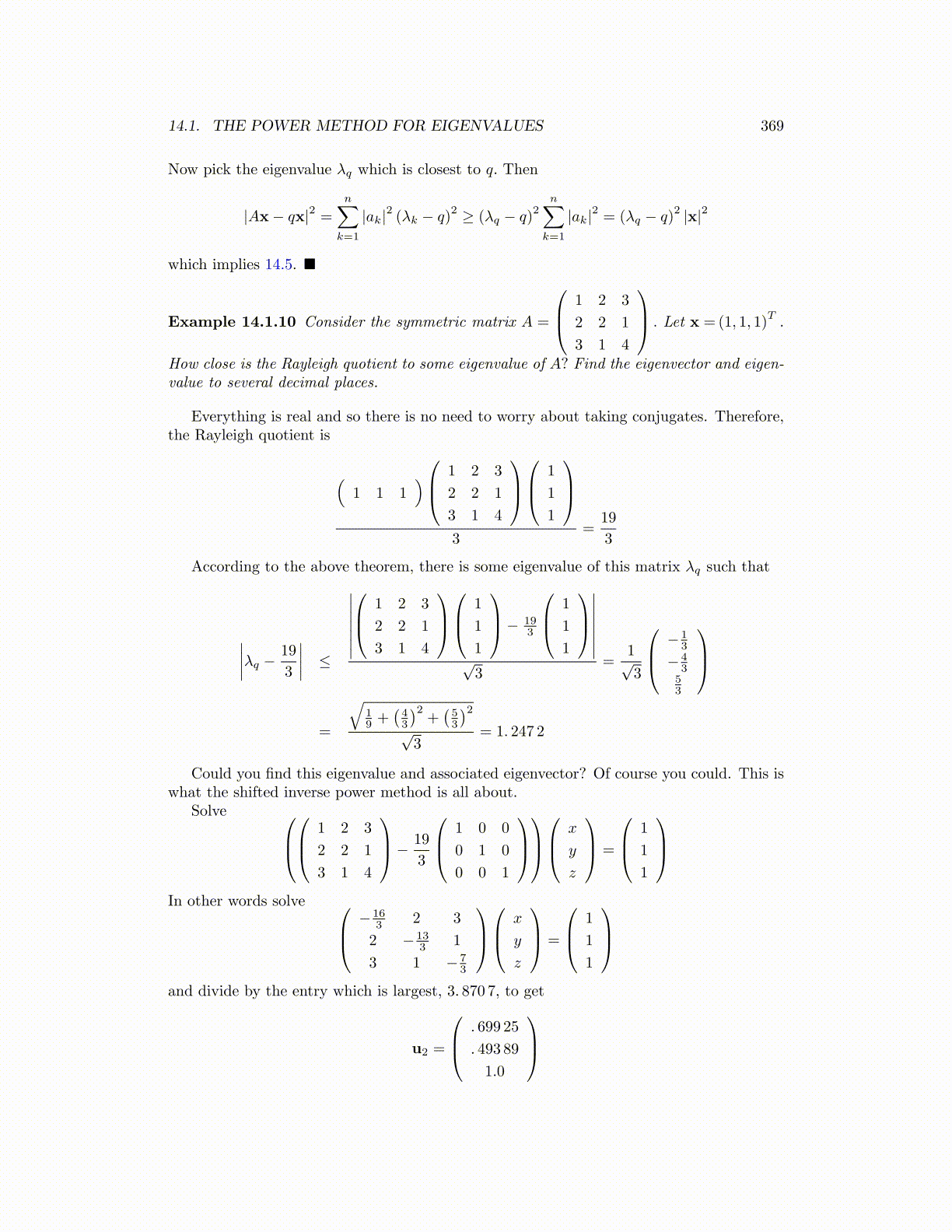
14.1. THE POWER METHOD FOR EIGENVALUES 369
Now pick the eigenvalue λq which is closest to q. Then
|Ax− qx|2 =
n∑k=1
|ak|2 (λk − q)2 ≥ (λq − q)
2n∑
k=1
|ak|2 = (λq − q)2 |x|2
which implies 14.5. ■
Example 14.1.10 Consider the symmetric matrix A =
1 2 3
2 2 1
3 1 4
. Let x =(1, 1, 1)T.
How close is the Rayleigh quotient to some eigenvalue of A? Find the eigenvector and eigen-value to several decimal places.
Everything is real and so there is no need to worry about taking conjugates. Therefore,the Rayleigh quotient is
(1 1 1
) 1 2 3
2 2 1
3 1 4
1
1
1
3
=19
3
According to the above theorem, there is some eigenvalue of this matrix λq such that
∣∣∣∣λq − 19
3
∣∣∣∣ ≤
∣∣∣∣∣∣∣ 1 2 3
2 2 1
3 1 4
1
1
1
− 193
1
1
1
∣∣∣∣∣∣∣
√3
=1√3
− 13
− 43
53
=
√19 +
(43
)2+(53
)2√3
= 1. 247 2
Could you find this eigenvalue and associated eigenvector? Of course you could. This iswhat the shifted inverse power method is all about.
Solve 1 2 3
2 2 1
3 1 4
− 19
3
1 0 0
0 1 0
0 0 1
x
y
z
=
1
1
1
In other words solve − 16
3 2 3
2 − 133 1
3 1 − 73
x
y
z
=
1
1
1
and divide by the entry which is largest, 3. 870 7, to get
u2 =
. 699 25
. 493 89
1.0